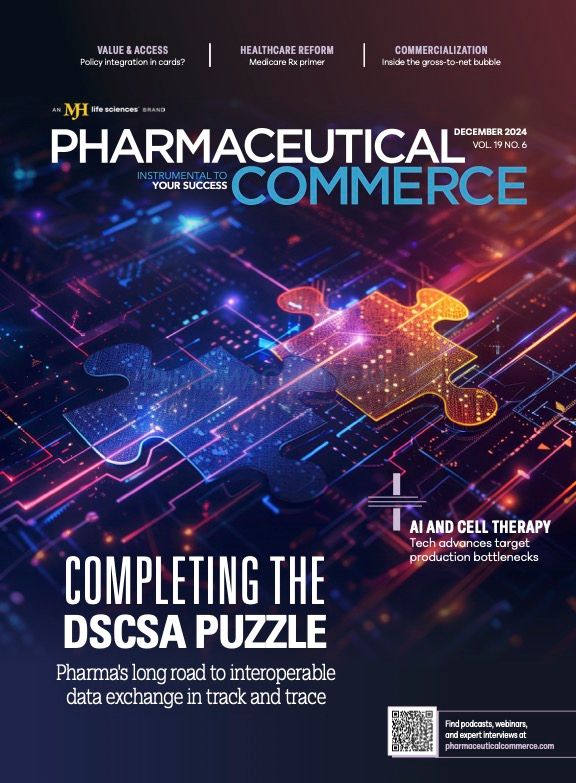Traceability's Latest Curve
Our December analysis of the twists and turns in the Drug Supply Chain Security Act is a timely one, as the FDA recently again pushed back the deadline for complying with new mandates on tracking and tracing drugs at the package level.

In the blink of an eye, 2024 has come to a close. Or just about. The December issue of Pharmaceutical Commerce represents the final installment of the year, and quite frankly, the editorial team could not have picked topics that were any timelier, beginning with the latest advances in drug traceability.
This niche topic has been headlined routinely by the Drug Supply Chain Security Act (DSCSA), a piece of legislation that was signed into law over a decade ago as a component of the Drug Quality Security Act. It’s intended to provide the industry with a blueprint for safely tracking pharmaceuticals as they move through the supply chain. In his feature, Editor Emeritus Nicholas Basta details the journey that industry has taken in complying with new mandates in the DSCSA on tracking drugs at the package level via an electronic, interoperable system.
Basta's report is a timely one, as the FDA again recently pushed back the enforcement deadline. He notes that the agency has proposed a new schedule for when full compliance becomes mandatory.
In other coverage this month, EVERSANA’s Maria Kirsch explores the top barriers encountered by patient services programs today, including lack of information; long wait times; rising costs of therapies; socio-economic challenges; fragmented care coordination; and access to technology. Concerning high drug costs, she cites an honest fact that many patients may not want to state aloud: the spikes in price place such a large financial burden on patients—especially those with chronic conditions or those in need of specialty meds—that many of them are forced to seriously consider whether they can afford to continue treatment.
Meanwhile, speaking of the patient journey, Sonam Dubey and Vishal Singal of Beghou Consulting note in a guest piece that when traditional data sources, such as claims and diagnostic and procedure codes, are combined with advanced analytics, the end result is a resource that can help lower diagnosis times, understand the “why” of patient behaviors and decisions, and identify patient cohorts for enhanced patient engagement and interventions.
With the popular “Who Moved My Prescription?” now in the rear-view, Bill Roth of IntegriChain welcomes a new series on “Popping the Gross-to-Net Bubble" in healthcare. The term refers to the widening gap between the gross revenue associated with a product (total sales at list price) and the net revenue (the amount received by the manufacturer after discounts, rebates, fees, and other adjustments).
We welcome your feedback on the coverage highlighted and the rest of our December slate. As always, thanks for reading.
— Mike Hennessy Jr., President and CEO, MJH Life Sciences

Protecting Temperature-Sensitive Pharmaceuticals, Without Unnecessary Plastic Waste
March 24th 2025Advances in the life sciences are driving a significant increase in the number of temperature-sensitive pharmaceuticals. The packaging industry is meeting the moment with advances of its own, including high-performance, environmentally-friendly materials that allow life science companies meet stringent thermal requirements and ambitious CO2e reduction goals. In this episode, TemperPack’s CEO Peter Wells shares insights from working with life sciences to move to certified biobased, home compostable, and curbside recyclable shipping solutions.